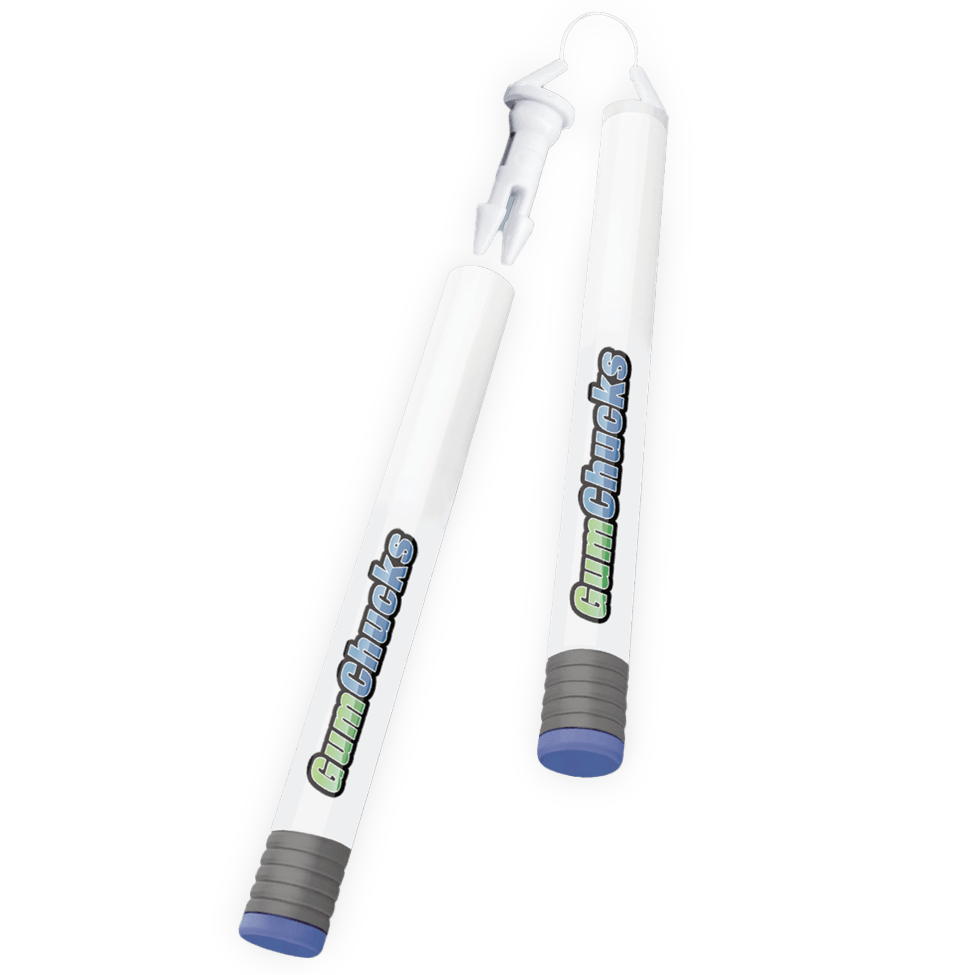
Independent Studies Show Improved Gum Health After Using GumChucks
Before Using GumChucks
48.3% Never flossed
After Using GumChucks for 4 Months
66% Flossed once a day
(The range is 0-1) = 1.20 (60% of the gums were inflamed)
(The range is 0-1) after 4 months = 0.5 (25% of the gums were inflamed)
Gum bleeding decreased by over 50% within 4 months of using GumChucks among 243 study participants.
How was this study conducted?
The study was conducted in two dental clinics. The patients were invited to participate through a newspaper advertisement, and a dental clinic advertisement. The length of the study results represented herein was at 4 months. Data was collected at baseline (2 weeks before the dental appointment), after the dental appointment, and four months after. There was an informed consent and it was approved by the ethical committee of Lisbon University. The appointments were free of charge.All the patients had gingivitis at the start of the study.
What was the protocol?
The patients were randomly assigned to 1 of 5 groups. Group 1: Control, Group 2: Intra Oral Camera, Group 3: Intra OralCamera and SMS, Group 4: SMS, and Group 5: Traditional spool floss.
All the groups were using GumChucks except Group 5. The appointment was the same for all groups. We have a script that we followed. It was controlled by external observers who randomly observed the appointments, and with a checklist in order to
control the similarity of the interventions. The appointments were conducted by the same person.
At baseline we collected dental hygiene behavior information (flossing and tooth brushing frequency; reason for not flossing daily) HAPA (Schwarzer, 2008) variables, Self Regulatory variables and bleeding index BOMP (Van der Weijeden et al. 1994).
Also after the appointment we asked for opinions about GumChucks, floss, Intra Oral camera and SMS. The appointment was unique in that we avoided cleaning terms and hygienic terminology. The focus was always on the control
of gingivitis.
In the first appointment (T1) we made the diagnosis of gingivitis, provided the treatment plan, scaling, professional prophylaxis, and also behavior education for controlling disease. Four months later, on the second appointment (T2),
another gingival assessment was done.
How was is put together?
We compared the results between the groups and looked for differences in behavior, attitudes, bleeding, and psychological variables. For example, we wanted to see if we could increase the time of flossing behavior. Moreover, not only the behavior, but also its efficacy. After four months GumChucks has proved to be an amazing tool for patients. Through increased compliance, GumChucks has helped patients manage bacteria from home and improve their oral health. This study is ongoing,
collecting additional results.
Independent study conducted by M.R. Araujo, M.J. Alvarez and C.A. Godhino
